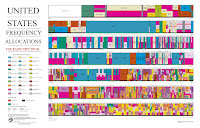In a July 19 blog post published by the Federalist Society, Joel Thayer made a convincing case that the FCC has statutory authority under of the Communications Act to issue licenses in the 2.5 GHz spectrum band to 2022 auction bid-winner T-Mobile, despite the expiration of the Commission's spectrum auction authority on March 1, 2023. Consider this also: The FCC's failure to issue to T-Mobile numerous licenses that it won and paid for pursuant to Commission rules appears to constitute agency action "unlawfully withheld or unreasonably delayed" under the Administrative Procedure Act (APA).
The point of this blog post is not to address whether or not litigation should be pursued in this matter. Rather, the point is to show how the APA and court precedents regarding unreasonable delay and mandamus relief bring into sharper focus the Commission's affirmative legal duty to issue to T-Mobile the 2.5 GHz spectrum licenses. The agency should carry out its duty by promptly issuing the licenses.

Following the expiration of the FCC's spectrum license auction authority on March 1 of this year, the position of the Commission appears to be that it now lacks authority to issue the 2.5 GHz licenses to T-Mobile, even though T-Mobile has paid for them. However, Mr. Thayer's legal analysis makes a strong showing that the Commission still has authority to issue licenses to T-Mobile pursuant to Sections 307(a) as well as its special temporary authority (STA) contained in Sections 307(c) and 309(c)(2).
If the FCC possesses the authority to issue the 2.5 GHz licenses, I suggest the agency also has a legal obligation to do so. Under the circumstances, the FCC's refusal to issue those licenses to T-Mobile appears to constitute an unreasonable delay by the agency in carrying out its duty, under Section 307(a) and the Commission's rules and procedures.
Section 706(1) of the Administrative Procedure Act (APA) authorizes courts to "compel agency action unlawfully withheld or unreasonably delayed." According to the Supreme Court in Norton v. South Utah Wilderness Alliance (2004), "the only agency action that can be compelled under the APA is action legally required." As the court explained in Norton, "the APA carried forward the traditional practice" of writs of mandamus as codified in the All Writs Act.
Decisions by the D.C. Circuit such as American Hospital Association v. Burwell (2016) treat mandamus petitions under the All Writs Act in conjunction with, or interchangeably with, agency delay claims under Section 706(1) of the APA. To establish the court's jurisdiction and entitlement to mandamus relief, a plaintiff must show: (1) that it has a clear right to the relief requested; (2) that the defendant agency has a clear, non-discretionary duty – owned specifically to the plaintiff – to perform the act in question; and (3) no other adequate remedy exists.
According to the D.C. Circuit in In re Core Communications (2008), if those requirements are satisfied, "[t]he central question in evaluating 'a claim of unreasonable delay' is whether the agency's delay is so egregious as to warrant mandamus." The D.C. Circuit applies, on a case-specific basis, one or more factors set forth in TRAC v. FCC (1984) – also known as the "TRAC factors" as "useful guidance" as to whether a delay warrants mandamus. In Burwell, the court stated that "in situations where plaintiffs allege that agency delay is unreasonable despite the absence of a specific statutory deadline, the entire TRAC factor analysis may go to the threshold jurisdictional question: does the agency's delay violate a clear duty?"
Section 307(a) of the Communications Act states that if "public convenience, interest, or necessity is served thereby" the FCC "shall grant" to any applicant a "station license." By complying with the FCC's requirements in winning the 2.5 GHz spectrum licenses at auction and timely making payment, T-Mobile has a clear right to those licenses. The Commission now has a clear and non-discretionary duty to issue them. If the agency continues to fail to issue the licenses, or at least grant the special temporary authority that T-Mobile has requested, there appears to be no remedy available other than mandamus and Section 706(1) that would achieve the result of putting those withheld licenses into the hands of the party that won and paid for them.
T-Mobile reasonably relied to its detriment on the Commission's rules, the 2019 order, and the agency's auction procedures. And T-Mobile is materially prejudiced by the agency's indefinite withholding of licenses worth $304 million, as it is being denied the benefit of using the spectrum to offer 5G services to consumers. Thus, all the elements for mandamus relief based on a claim of agency action unlawfully withheld or unreasonably delayed are present.
None of this is to suggest that litigation should be necessary to resolve the problem posed by the FCC's withholding of 2.5 GHz licenses that T-Mobile won at auction. But it does suggest that the APA's "unlawfully withheld/unreasonably delayed" provision offers a useful lens for discerning the Commission's obligation to issue licenses that were validly won at auction and timely purchased. Indeed, it suggests that the case for the Commission to act by issuing the 2.5 GHz licenses, or at least granting T-Mobile's request for special temporary authority, and enabling use for 5G services is stronger than the case for the agency to continue doing nothing except hang onto the money of a private party that followed the rules.














